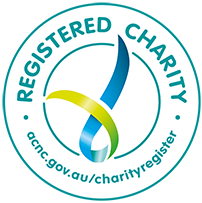Royal Society of NSW News & Events
1142nd General Monthly Meeting
"The genetics behind our drinking water turning toxic"
Professor Brett Neilan, School of Biotechnology and Biomolecular Sciences, University of NSW
Wednesday 3 May 2006, 6.30 for 7 pm
Conference Room 1, Darlington Centre, City Road
BIOGRAPHICAL NOTES
Professor Brett Neilan was a member of the team who won the Royal Societies of Australia 2004 Eureka Prize for Interdisciplinary Research.
Report on the General Monthly Meeting by Eveline Baker
Professor Brett Neilan commenced his lecture with the statement that, in a presentation to members of our Society 15 years ago, blue-green algae were a problem that may have a cure. He believes that this is the case in more ways than one. Improving water quality is a process not only in engineering but also in discovery of natural products. Knowledge of the toxins could lead to knowledge of anti-cancer agents. The environment dictates evolution and adaptation. Survival is achieved at the molecular level. The diversity of life on earth and all things biological derives from molecular diversity. Vast stromatolite reefs have survived for about 2.5 giga-years, before the origin of eukaryotic life. Found in selected coastal areas of the world, including Western Australia, these are sedimentary, calcium carbonate based formations, fossils of blue-green algae, not all of which relied on photosynthesis. Interestingly, blue-green algae have a mechanism for surviving in high salt media and even produce calcium carbonate in the laboratory. Secondary ion mass spectrometric data indicate that some of the larger stromatolites may have grown about 10,000 years ago. The Antarctic has melt-water hyper-saline ponds in which "mermaid's hair" proliferates. Toxins have been found in these and similar slime layers. Interestingly, some Africans eat blue-green algae as food. In other areas of the world liver cancer is prevalent in those who drink 'green' water. It is a worthy question to ask why some people survive and others become ill and die. Pathogenicity has been found to be determined by the DNA cluster, not the organism. The level of light determines which promoter is used to transcribe the toxin genes. Toxins have been found to become harmful to animal and human life when they move outside of the cell. The chemical structure of several of these neurotoxins has recently been determined. It is interesting to observe that the toxin molecules are relatively small and similar in structure to some of the currently known natural and synthetic drugs that influence neural activity.
Sydney meetings
- Sydney meetings 2024
- Sydney meetings 2023
- Sydney meetings 2022
- Sydney meetings 2021
- Sydney meetings 2020
- Sydney meetings 2019
- Sydney meetings 2018
- Sydney meetings 2017
- Sydney meetings 2016
- Sydney meetings 2015
- Sydney meetings 2014
- Sydney meetings 2013
- Sydney meetings 2012
- Sydney meetings 2011
- Sydney meetings 2010
- Sydney meetings 2009
- Sydney meetings 2008
- Sydney meetings 2007
- Sydney meetings 2006
- Sydney meetings 2005
Hunter meetings
- Hunter meetings 2023
- Hunter meetings 2022
- Hunter meetings 2021
- Hunter meetings 2020
- Hunter meetings 2019
Southern Highlands meetings
- Southern Highlands meetings 2023
- Southern Highlands meetings 2022
- Southern Highlands meetings 2021
- Southern Highlands meetings 2020
Details of events scheduled for the remainder of the current year by the Southern Highlands branch can be found on its website, while details of events of previous years can be found here.
Western NSW meetings
Distinguished Fellows
Governance
List of Presidents
Useful links
Support us
 We are a registered charity and very much welcome your support through donations or a bequest. Donations in support of our Scholarship and Library programs are tax-deductible in Australia.
We are a registered charity and very much welcome your support through donations or a bequest. Donations in support of our Scholarship and Library programs are tax-deductible in Australia.





